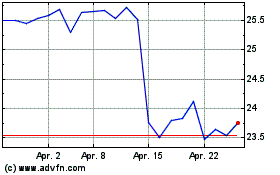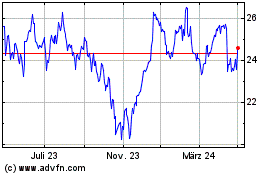ArcelorMittal publishes concept for global low-carbon emissions
physical steel standard
- Dual scoring system which provides customers with a
life cycle assessment (LCA) value alongside a rating system which
measures progress towards near-zero
- Designed to incentivise the decarbonisation of both
primary and secondary steelmaking
- Provides transparency and consistency across steel
products for customers
- Supports the development of markets for low-carbon
emissions steel
14 June 2022
ArcelorMittal (‘the Company’) has today published a concept for
a low-carbon emissions steel standard to help incentivise the
decarbonisation of steelmaking globally and support the creation of
market demand for physical steel products which would be classified
as lower, and ultimately near-zero, carbon emissions steel.
The creation of clear definitions for low-carbon emissions
physical steel is an important component of ‘demand pull’ and
‘supply push’ mechanisms that are required to support the steel
industry in its transition to net zero by 2050. Clear definitions
will also help inform targeted policy to support the scale-up and
commercialisation of these near-zero technologies.
Three core principles
At the heart of the concept are three core principles:
- It must include a dual score system comprising a LCA value for
finished products (EPD for construction products) alongside a
decarbonisation rating system which categorises low and near-zero
carbon emissions per tonne of hot rolled steel and rewards
producers as they decarbonise from their starting point.
- It must be designed in such a way that incentivises the
decarbonisation of all methods of steel production through
technology shifts, rather than simply through increasing scrap
rates using existing technology. This can be done by using a
sliding scale based on the percentage of scrap used in production,
a system which is also at the heart of the ResponsibleSteel™ and
International Energy Agency (‘IEA’) low-carbon emissions steel
models.
- It must include a clearly defined boundary from which carbon
emissions are counted for the decarbonisation rating system.
The concept is designed to be complementary to methods for
rewarding virtual low-carbon steel, at least until significant
amounts of physical low-carbon steel are available.
Commenting, Brad Davey, Executive Vice President,
ArcelorMittal, and chair of the Company’s Climate Committee,
said:
“Setting a standard to classify low-carbon emissions steel
during our industry’s transition to net zero is critical to our
decarbonisation journey. We have spent a lot of time thinking about
how to do this in a fair way that incentivises all steelmakers to
reduce emissions and ultimately achieve net zero. At the heart of
our concept is a system that ensures that all steelmakers, both
primary and secondary, are incentivised to further improve their
emissions, and progress towards near zero is recognised and
rewarded.
“We know that there are many organisations giving this question
a lot of thought. We are in close discussion with several of these
organisations and have welcomed the opportunity to share our
expertise of steelmaking with them as they develop their
recommendations. As this is such a critical topic for the industry,
we decided to directly publish the key principles we believe should
be at the core of any system to officially categorise lower and
near zero carbon steel.
“We believe these principles will help incentivise the industry
and will also prove intrinsic in providing transparency and clarity
to steel consumers, guiding their purchasing decisions and helping
to develop green steel lead markets.”
Geert van Poelvoorde, Executive Vice President and CEO
of ArcelorMittal Europe, added:
“We know that our customers want low-carbon steel products. That
is why we launched the XCarb™ green steel certificates which have
proved very popular with our customers. However, these are virtual
low-carbon products and we must also have a system that defines
what constitutes physical low-carbon steel during the transition to
near and ultimately net zero. This will help support a return on
the investment required to transition to low-carbon steelmaking
which will be more costly than the technologies used today. We
believe it is important that any standard has a dual approach that
clearly states the LCA value of the product as well as a rating to
show decarbonisation progress. This makes the embodied carbon
content of the product clear to customers but also the progress
that producer is making towards near zero – a vital component of
ensuring every company contributes to achieving the Paris
Agreement.”
A dual scoring system to enable like-for-like
comparisons and incentivise decarbonisation
Any standard must incorporate a dual score consisting of: a LCA
value for finished products so that customers can clearly see the
embodied carbon emissions of the steel they purchase, and; a
decarbonisation rating system akin to the labelling system already
used in the EU for white goods, which measures the level of steel
producers’ decarbonisation progress.
Sliding scale based on percentage of scrap
input
Any standard must incentivise all steel producers to progress
towards net zero, irrespective of the technology they start with.
The carbon emissions in a tonne of steel is heavily influenced by
the metallic input used in steelmaking, with secondary steelmaking
(scrap-based) carrying a much lower carbon footprint than primary
steelmaking (iron ore based). Although scrap steel has an important
role to play in the decarbonisation of the global steel industry,
it is a finite resource which is already fully utilised, and
primary steel will continue to be needed to meet steel demand until
well beyond 2050. Therefore, we firmly align with the view of both
ResponsibleSteel™ and the IEA that a low-carbon emissions steel
standard needs to incorporate a sliding scale which accounts for
the metallic input (primary/iron ore vs. secondary/scrap) of
steelmaking and incentivises decarbonisation through the
introduction of low-carbon emissions technology rather than simply
by increasing the amount of scrap used.
Boundary
It is critical that a consistent boundary is used in order to
enable a like-for-like comparison between steel producers for the
decarbonisation rating system, and that this boundary is
representative of the core emissions of steel production.
Therefore, in its initial phase our concept proposes a core steel
system boundary that can be readily measured today, based on the
Net-Zero Steel Pathway Methodology Project, which counts all Scope
1 and 2 emissions as well as selected Scope 3 emissions from
ironmaking, steelmaking, casting and rolling1. As measuring
methodology and primary upstream emissions data becomes available
this boundary would then be extended in a second phase to include
upstream emissions.
The graph below demonstrates the concept of how the
decarbonisation rating system would work.
A steel producer’s position on the graph would be based on their
embodied carbon emissions per tonne of hot rolled steel (y-axis)
and the metallic input they use (x-axis). The producer’s position
would fall above or below a threshold line, indicating whether they
would be producing low-carbon emissions steel or not.
Furthermore, steel producers which fall on or below the
threshold would then be split into six bands - A+ to E - with the
producer progressing through the bands as they decarbonise. This
system could therefore be used by policy makers and customers to
incentivise producers to further decarbonise in order to attain a
higher rating (with A and A+ being the highest and the only
category where producers could claim their steel to be near zero
(A) or net zero (A+)). Similar to ResponsibleSteel™ and the IEA,
the threshold for near-zero steel should be set at a level which
supports all potential decarbonisation routes.
Finally, any standard should also still recognise the early
actions taken by first movers to enable customers to report
reductions in their Scope 3 emissions through the purchase of
virtual certificates. This should be represented through the
inclusion of the ‘S’ certificate.
For further details on ArcelorMittal’s proposal for a low-carbon
emissions standard please visit
https://corporate.arcelormittal.com/climate-action/low-carbon-emissions-steel-standard or
have a look at our animated video which explains the standard and
its methodology here -
https://www.youtube.com/watch?v=6S5rDGasH-s.
ENDS
About ArcelorMittal
ArcelorMittal is the world's leading steel and
mining company, with a presence in 60 countries and primary
steelmaking facilities in 16 countries. In 2021, ArcelorMittal had
revenues of $76.6 billion and crude steel production of 69.1
million metric tonnes, while iron ore production reached 50.9
million metric tonnes.
Our purpose is to produce ever smarter steels
that have a positive benefit for people and planet. Steels made
using innovative processes which use less energy, emit
significantly less carbon and reduce costs. Steels that are
cleaner, stronger and reusable. Steels for electric vehicles and
renewable energy infrastructure that will support societies as they
transform through this century. With steel at our core, our
inventive people and an entrepreneurial culture at heart, we will
support the world in making that change. This is what we believe it
takes to be the steel company of the future.
ArcelorMittal is listed on the stock exchanges
of New York (MT), Amsterdam (MT), Paris (MT), Luxembourg (MT) and
on the Spanish stock exchanges of Barcelona, Bilbao, Madrid and
Valencia (MTS).
For more information about ArcelorMittal please
visit: http://corporate.arcelormittal.com/
| |
|
| Contact
information ArcelorMittal Investor Relations |
|
| |
|
| General |
+44 20 7543
1128 |
| Retail |
+44 20 3214
2893 |
| SRI |
+44 20 3214
2801 |
|
Bonds/CreditE-mail |
+33 171 921
026investor.relations@arcelormittal.com |
|
|
|
|
|
|
| Contact
information ArcelorMittal Corporate Communications |
|
| Paul
WeighTel:E-mail: |
+44 20
3214 2419press@arcelormittal.com |
|
|
|
1 To see exactly what is included in the boundary please see
https://corporate.arcelormittal.com/media/phendpxm/arcelormittal-low-emissions-steelmaking-standards-proposal.pdf
ArcelorMittal (EU:MT)
Historical Stock Chart
Von Mär 2024 bis Apr 2024

ArcelorMittal (EU:MT)
Historical Stock Chart
Von Apr 2023 bis Apr 2024
